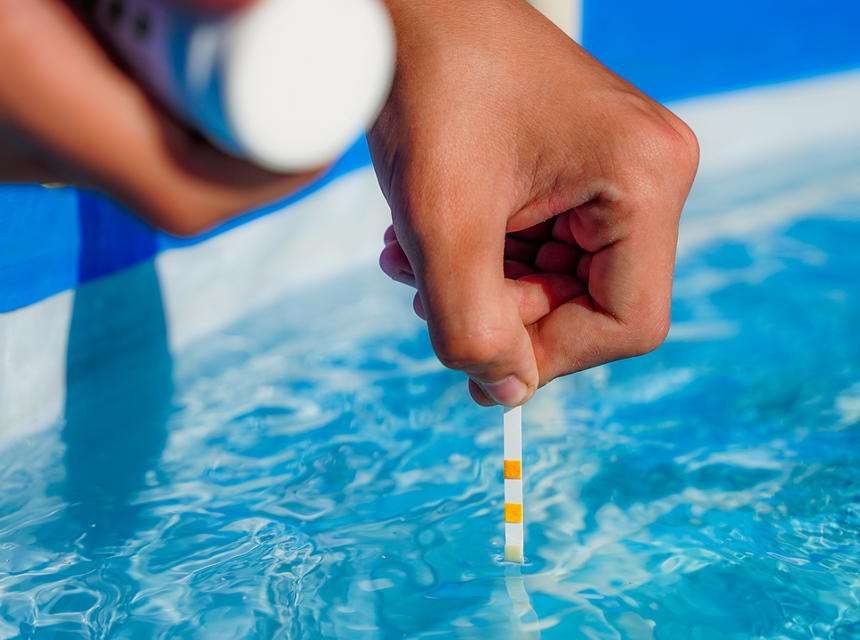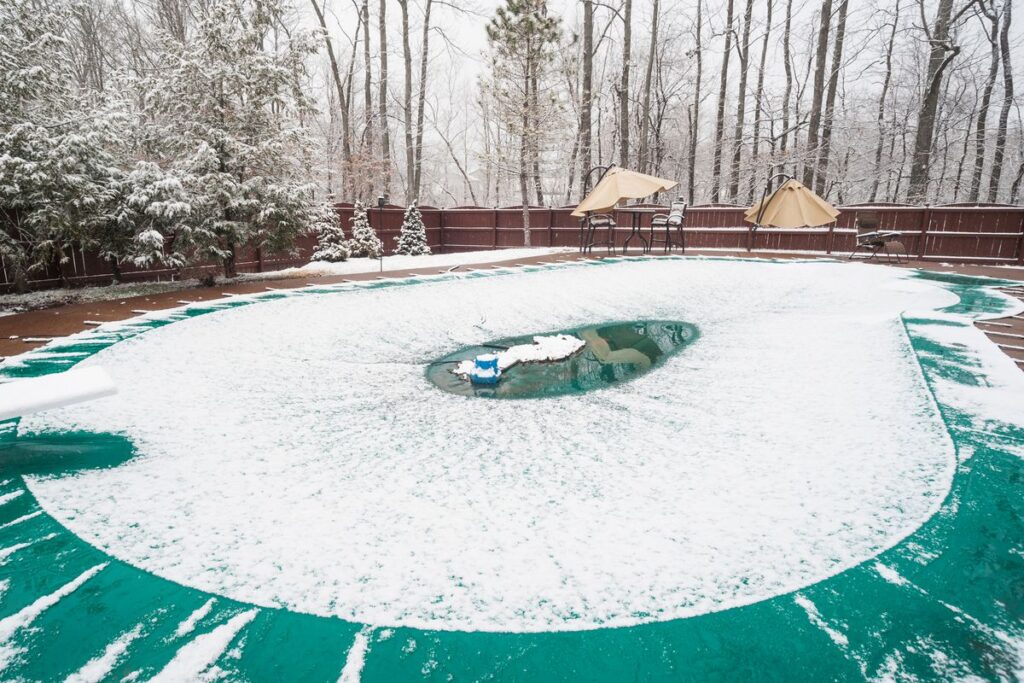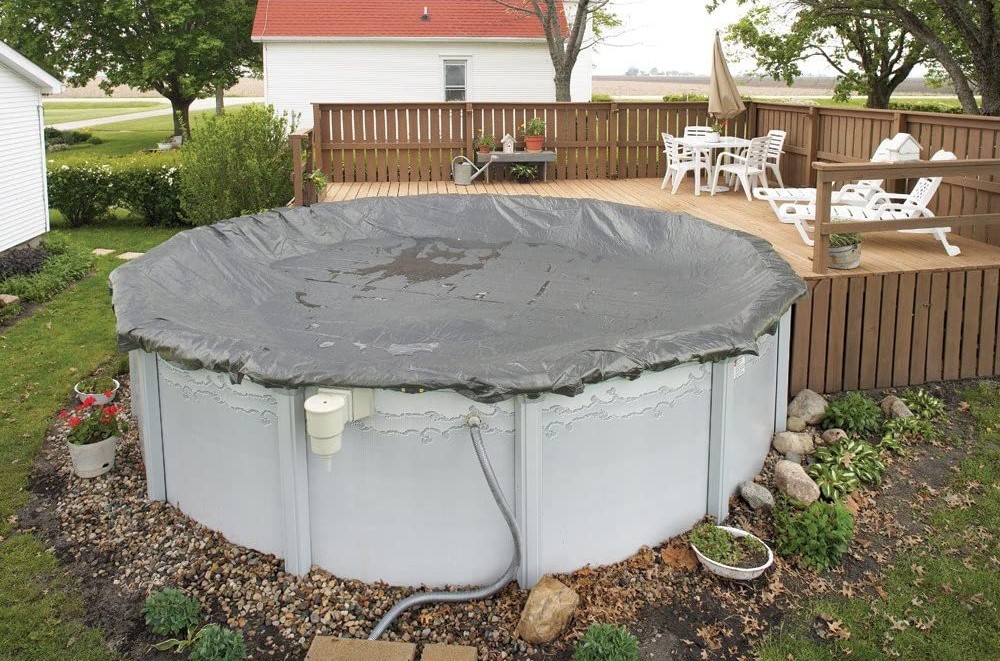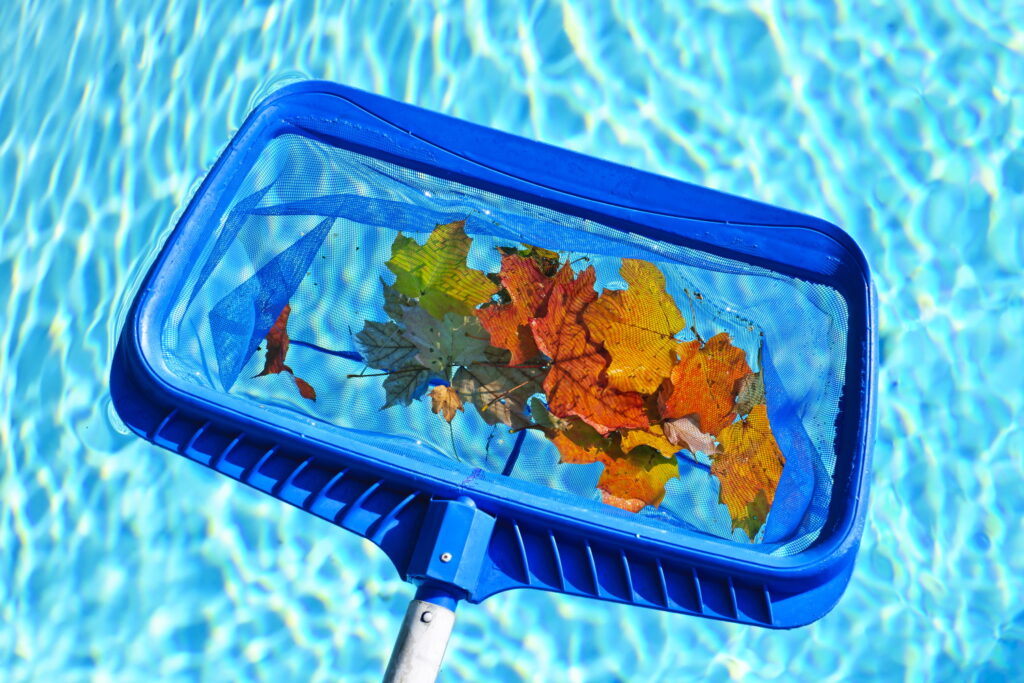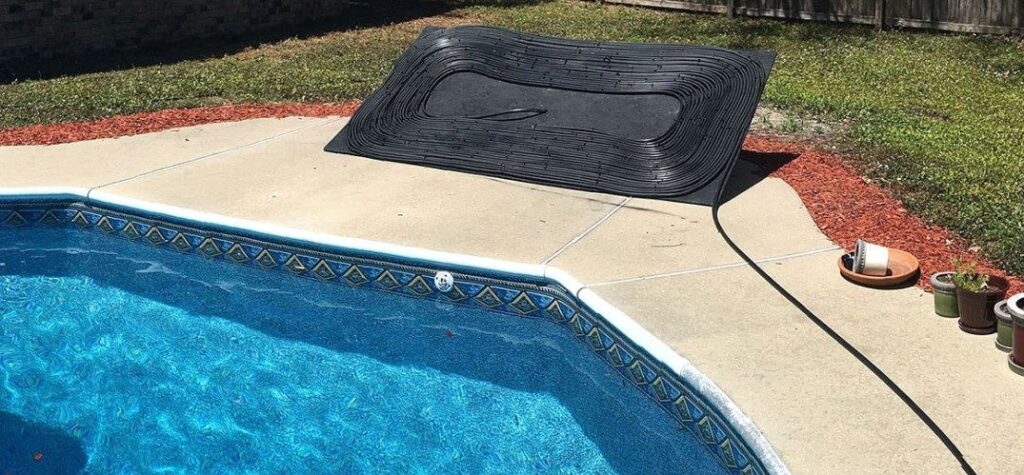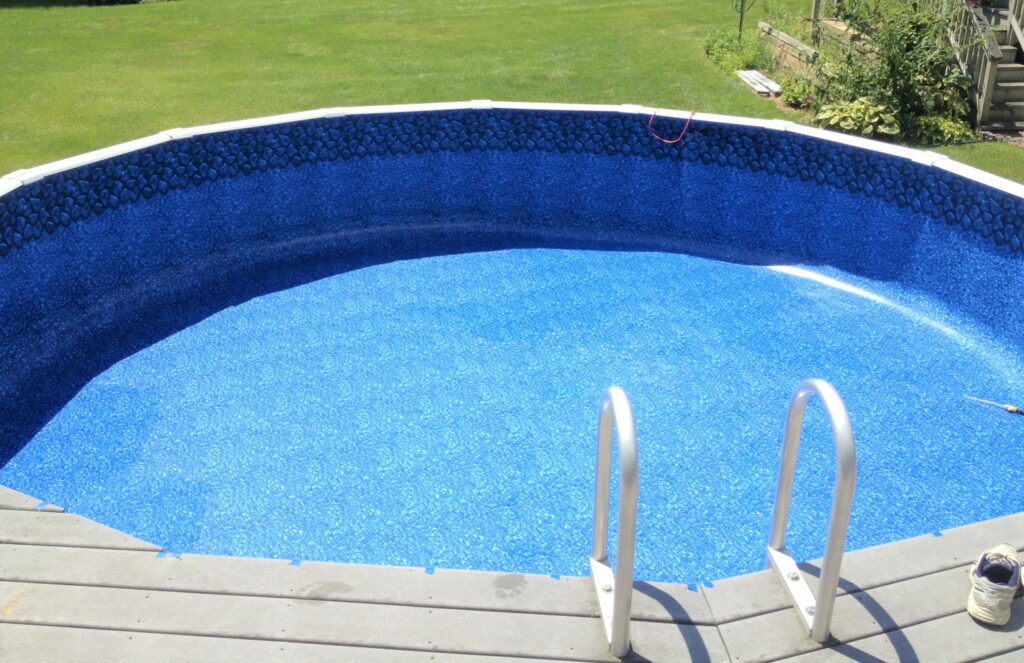Owning a pool is like having a give-and-take relationship. You have to give something so you can enjoy a leisurely swim on your weekend or host a backyard pool party. Often what you give is in the form of maintenance, e.g., using sanitizer to clean the water, skimming leaves or debris off the water surface, vacuuming the pool floor, brushing the side walls, etc.
Even with all that, the water may not be as clean as you want it to be. That’s why sometimes it’s best to drain the pool and start afresh. Similarly, draining it beforehand will be necessary if you have to do repairs at the bottom or sides of the pool. So how do you drain a pool? Find out below.
Draining water from your swimming pool is certainly not something you do every day, weekly, or even monthly in the name of maintenance. It’s also not recommended that you do it often. However, you should know how to drain a pool just in case you encounter unique circumstances that necessitate you to do it. So here are examples of plausible reasons why you may need to empty your pool of its water content.
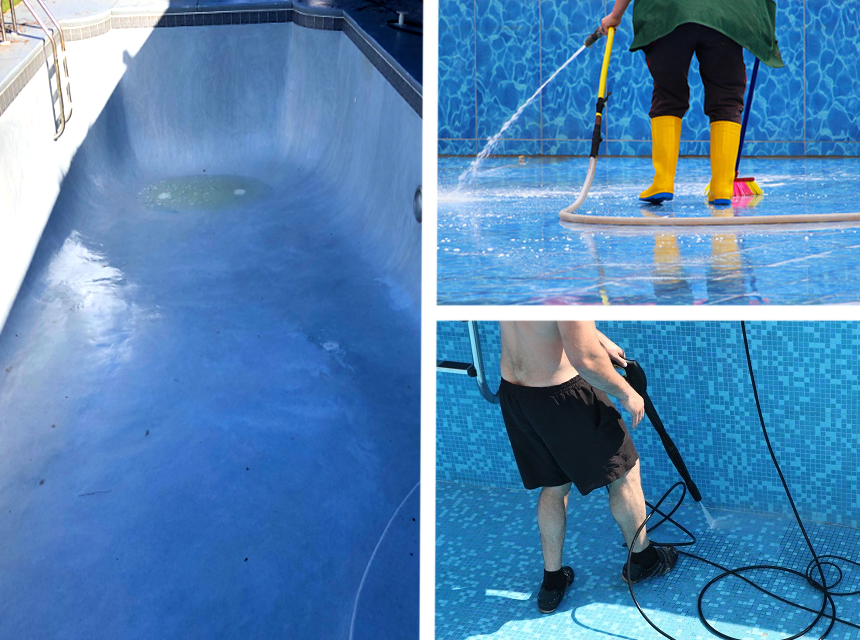
You probably clean your pool regularly with the water still in there. This process involves skimming off leaves, debris, and any other form of trash that’s landed on the water as a first step. After that, you brush sediment and things like algae from the walls, followed by vacuuming the floor. Cleaning like this works for weekly maintenance, and you can do it for years without a problem.
However, you’ll see cleaning the surfaces becomes harder and harder over time. It could just be a problem with cleaning equipment, so we’ve outlined some of the best pool vacuum heads available, so you know which has a better chance of leaving your pool floor spotless. However, if it’s not and the stains persist, you may have to drain the pool and clean it.
Often, it’s an indicator of high metal content in the water. Also, calcium deposits can cause a problem if you leave them for too long. Instead of waiting for them to cause enough damage to necessitate a repair job, you could learn how to drain a pool with a hose, pump, or other equipment you have close by.
This should make it easier to scrub out the stains and even acid wash the pool surfaces where necessary.
Also, like other parts of your house, the pool in your backyard isn’t going to stay pristine forever. Its age will start showing with a crack here, a leak, or a broken ladder. Ultimately this means repairs are necessary, and you can’t do them with water in the pool. As such, draining the swimming pool is the next logical step.
Your swimming pool will be exposed to the sun as an outdoor fixture. Even with the water covering the pool surface, this is bound to take its toll on the interior paint job. What was once a nice blue hue may seem washed up or faded.
If you’re bothered by this, you may want to add a fresh paint coat, which requires an empty pool. We’ve outlined some of the best pool paints available to cater to different types of pools, just in case you’re already starting to see the faded colors.
Your pool contents are a mixture of water, chemicals, and other substances that have dissolved into the water over time. Consequently, maintaining a good pH balance means that you need to keep on adding chemicals as part of your maintenance ritual. According to Better Health Trusted Source Swimming pools - water quality - Better Health Channel www.betterhealth.vic.gov.au , a pH higher than 8 can lead to skin rashes. On the other hand, a pH below 7 will sting the swimmers’ eyes. As such, you need to keep it between 7 and 7.6.
However, even with that, there eventually comes a time when the water needs to be changed. Often, it’s because the total dissolved solids overwhelm the filters making it hard to clean the water. This can offset the water chemistry and make it harder to maintain the pool.
Once the threshold of total dissolved solids gets to about 2,500 parts per million, maintaining the pH becomes an uphill task. You’ll need more and more chemicals, with mineral stains popping up everywhere on the pool surface.
These can even damage the pool walls and floor with no way to reduce the TDS levels in the water. As such, it becomes necessary to change the water.
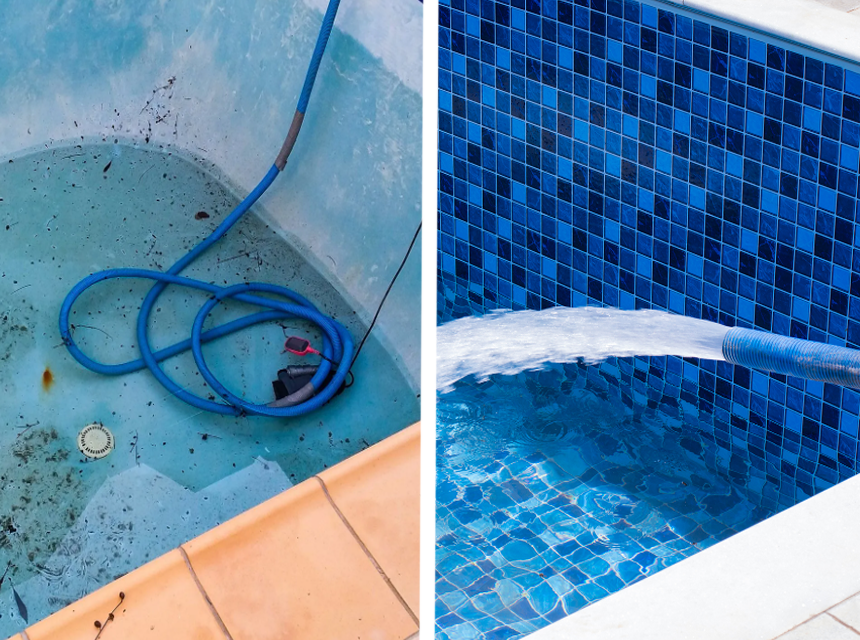
After you decide to drain the pool, you need to plan the best moment for the exercise. Often this is when you’re most prepared for the eventualities that come with the job. For instance, you can’t drain a pool if you aren’t ready to pay the exorbitant water bill that comes with replacing the water. Season and weather are also important considerations. You can’t drain your pool in winter or when it’s raining. You can, however, drain a bit of the water as part of the winterization process.
As mentioned above, you may have to wait for the right weather to come around, especially if you’re draining the entirety of the pool. This could mean the difference between damaging the pool and leaving it in tip-top condition.
Doing it in the rain is not recommended for health reasons and because it would take longer than necessary. After all, rainwater will still be getting into the pool. Also, if you’re draining it during the rainy season, you might not be able to paint or repair the part of the pool that needs fixing, so there’s no point.
Lastly, for in-ground pools, the pressure around it is higher in the winter and rainy seasons due to the waterlogged soil. As such, if you were to drain it, the ground would push the pool up as you’re draining and cause more damage.
On the other hand, if the temperatures are too high, the heat could cause cracks on the pool floor and walls. Liner also doesn’t react too well to heat from the sun, so while it is ideal to wait for sunny weather, ambient temperatures of more than 85°F are a risk.
Autumn is the best season since you get the sun, but temperatures aren’t too high. Even the National Center for Environmental Information Trusted Source Assessing the U.S. Climate in October 2021 | News | National Centers for Environmental Information (NCEI) During October, the average contiguous U.S. temperature was 57.0°F, 2.9°F above the 20th-century average. www.ncei.noaa.gov notes that the sixth-warmest October recorded only averaged 57.0°F temperatures.
Before you drain any pool, you need to have a game plan for the process. This includes identifying where to dispose of the water you drain, how to access the replacement water, and how to ensure efficiency.
With the chemicals in pool water, it would probably kill most plants. Dumping on your lawn or using it for irrigation is highly discouraged. The soil in your yard would probably become waterlogged and muddy due to the over 10,000-gallon capacity of the pool.
Furthermore, you may be restricted by local authorities, with some municipalities restricting the drainage of pool water into storm drains. As such, before you can learn how to drain a pool with a sand filter or pump, you may have to brush up on the laws in your area.
Draining the water into a home sewer cleanout should be okay, but you still need to check with your local authorities for timing instructions. Some municipalities give guidelines on when you can or can’t do it, saving you the headache of a potential fine.
Even though you can drain pool water into a home sewer cleanout, most municipalities require that you reduce the pool chemicals in the water as much as possible. Fortunately, the Chlorine Institute Trusted Source Chemical Properties - The Chlorine Institute www.chlorineinstitute.org notes that liquid chlorine boils at about – 29.15°F. This means leaving it alone for a couple of weeks before the intended drainage date should work, as the chemicals will dissipate themselves.
However, if you’re strapped for time and testing reveals there’s still too much chlorine, you can use neutralizers.
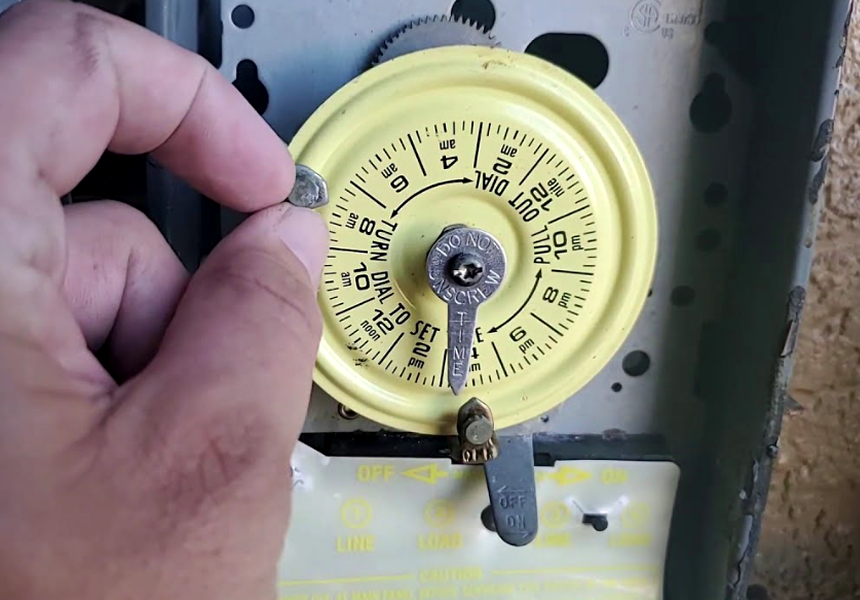
Timers help automate some of the pool maintenance and features. With pool lights, for instance, the timers will turn them on at dusk and turn them back of at dawn. As for the water pump, it helps circulate chemicals and sanitize the water.
Nevertheless, if you don’t turn off the timers, these features will turn on as you drain the pool. Since the lights are water-cooled, turning them on while there’s no water in the pool means they’ll overheat and likely shatter.
It’s the same for the water pump, where sucking in the air instead of water can cause extensive damage. Turning off the automatic timers eliminates the risk of this happening.
The pool is not meant to stay empty for too long. You’re supposed to drain it, fix whatever is wrong quickly, and fill it back up. The longer it stays empty, the higher the chances of structural damage. If you’re not prepared before you drain it, you’ll have to run around looking for supplies after the pool is empty.
How you drain your pool may depend on the equipment you already have at hand or your pool setup. For instance, if you have a sand or DE filter, you can use either. In this case, here’s how to drain a pool with a cartridge filter.
The drain plug at the bottom of your cartridge filter is there, so you can drain the water in your filter as part of your pool winterization process. However, if you unplug it, the water going into the filter will drain immediately. You have to be sure the area under your filter can work as a disposal plan. If not, you might be better off using the drain valve provided.
To start, turn off the water pump and unscrew the drain plug. After that, turn the pump back on and let the water run. Be sure to monitor the water levels in your pool so they don’t get too low. After all, you don’t want the pump sucking in the air.
Due to the risk to the pump, this method only works if you’re not draining most of the water. Once done, turn the pump back off and screw on the drain plug.
Using the drain valve cuts the cartridge filter out of the process. The valve connects the pool to the filter and is also connected to a small waste line. You can connect a backwash hose to the waste line with the other side leading to the sewer cleanout. Ensure the hose is well-clamped to the pipe and there are no kinks; otherwise, it may rip open.
After that, shut off the pump and rotate the three-way valve. This closes the conduit to the filter and opens the connection to the drainage pipe. Once you turn the pump back on, the water will start draining into the sewer cleanout.
Even with this model, you must watch the water levels, so you don’t damage your pump. Remember to switch off the pump and turn the drain valve back after you’re done.
As for how you drain a pool with a sand filter, you turn the pump off and connect the backwash hose to the waste pipe in the filter setup. Set it up, so it runs to the disposal site without any kinks. Follow up by rotating the multiport valve on the sand filter so it points to the “waste” position.
Turning the pump back on will push water through the backwash hose. When you’re satisfied with the water drained from the pool, you can turn the pump off and rotate the multiport valve back to the “filter” position.
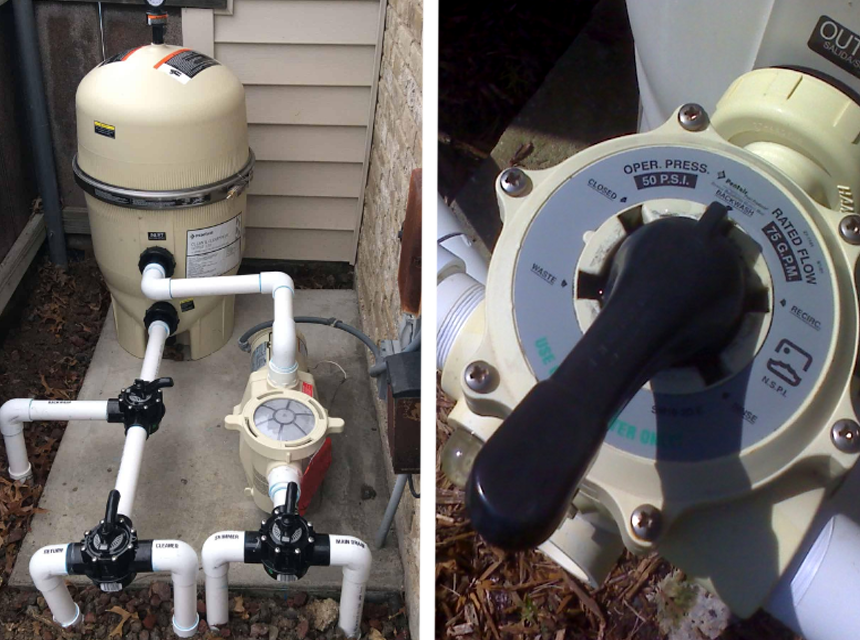
Like the other filter types, you start by turning off the pump. You then connect a hose to the waste line so you can direct the water to your ideal disposal site. Ensure the hose is securely connected and free of kinks before turning the multiport valve to the “waste” position.
After that, turn the pump on and let the water drain out. Once the water in the pool is at the desired level, you can turn the pump off and rotate the valve back to the “filter” position.
A Cartridge, Sand, or DE filter only works if you’re draining a few inches of water. If your water line goes beneath the skimmer, the pump will likely take in air which can cause extensive damage. That said, we’ve outlined some of the best pool filters to fit different budgets and needs for when you’re not draining your pool.
Draining an inground pool is risky due to the pressure exerted by the water in the ground. The water in the pool helps exert some counter pressure; hence you won’t see the pool popping out of the ground and breaking apart in the process. However, when you drain your pool, this equilibrium can be broken. So how do you drain an inground pool safely?
A submersible pump allows you to pump out water from the bottom of the pool without risking damage due to air intake. You can either buy or rent one out. That said, renting makes more sense since you likely already have a pump in your pool system. Furthermore, draining your pool is not something you do regularly.
Once it is in your hands, attach a backwash hose and place the other end of the hose at the disposal site. Be sure it’s nowhere near your yard that the drainage at the disposal area works just fine. If not, the water could saturate the soil in your yard and increase pressure on the pool.
After that, you can start pumping the water out of the swimming pool.
You’ll want to monitor the draining process from start to finish, with particular emphasis on the pump and hose. Check for holes in the hose that could be dumping water in your yard just to be safe. You also want to ensure the disposal site works as well as intended.
When you eventually reach the point where the submersible pump isn’t pushing out more water, you can turn it off and remove it. You’ll likely be able to access the areas that need repair or a new paint job. You rarely have to pump out all the water in the pool, and if you do, it might be a job for a professional.
According to the University of Nottingham Trusted Source RLO: Starling’s Forces: Hydrostatic Pressure www.nottingham.ac.uk , hydrostatic pressure is exerted by any fluid in a confined space. As such, the water in the ground exerts tremendous amounts of hydrostatic pressure, and it’s balanced out by the water in the swimming pool.
Consequently, hydrostatic pressure relief valves are part of your pool setup and are there for when you need to drain the water. They’re likely in the form of white rings on the floor and are connected to a slotted pipe that terminates in an underground gravel pit.
The valves allow underground water to enter the pool as a pressure relief mechanism. By doing so, they keep the pool floor from popping up. As such, if you’ve drained the pool, you’ll need to open them by unscrewing the white rings. That said, it’s good to have replacements on hand just in case the removal process doesn’t go as planned.
You needed to paint the walls? Do that. You needed to patch a crack? Do that. The goal is to get the job done as quickly as possible so you can refill the pool.
Once you’re finished with the repair job or paint job, it’s time to get ready to refill the pool. You start by replacing the hydrostatic pressure relief valves. If you leave them open, some of your pool water can drain into the ground under the structure and contribute to additional hydrostatic pressure.
Adding Teflon tape on the threads can help ensure the plugs you use on the valves are screwed on tight and secure.
Follow up by refilling the pool. Use multiple hoses for extra speed, although you may want to add hose filters if the water is chock full of metals. You don’t want to have to deal with metal damage and stains so soon after you drained the pool.
With the pool full, you can turn on your maintenance pump to get the water circulating. This will also allow it to be heated, treated, and filtered.
Lastly, before you can jump in, you need the pH to be just right. After all, the freshwater may not be safe for a swim.
If you empty the pool, there is a chance of structural damage, cracks, or damage to the lining. However, you don’t have to remove all the water for most repairs and clean-up jobs. Also, above-ground pools are much easier to work with since they’re not subject to hydrostatic pressure. Nevertheless, if you’re worried about potential damage or have an in-ground pool with a much higher risk, you might want to consider a professional for the job.
As mentioned above, you should have a water disposal plan from the start. A home sewer cleanout seems like the best bet for getting rid of pool water. However, you should check on the drainage of the cleanout beforehand, just in case there are any clogs.
Some communities don’t have a problem with draining into a storm sewer, but you may need a permit.
Using the filter pump to drain most of the pump is one big mistake that can damage the pump and cause the owner more problems. Also, draining the water without waiting for the chemicals to dissipate is a huge problem. This is especially true when they release the same water into their lawns which can increase the hydrostatic pressure and kill their grass.
Some people also forget to open or close the hydrostatic pressure relief valves. Lastly, people leave the pool without water for too long, leading to more damage.
